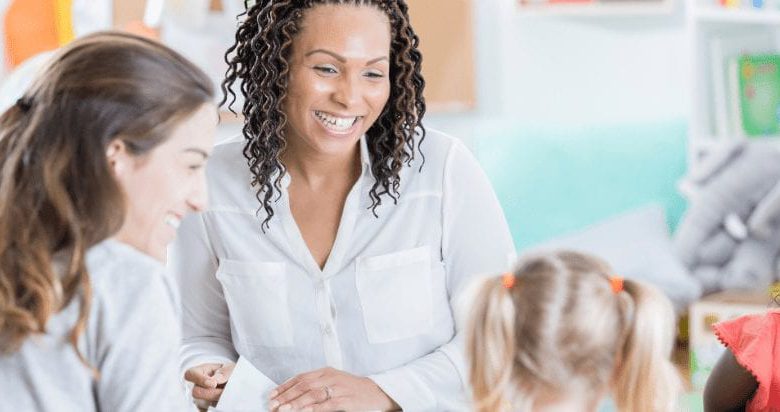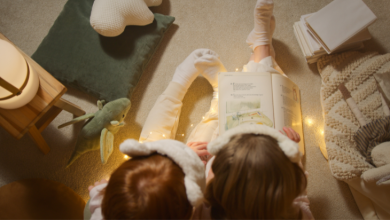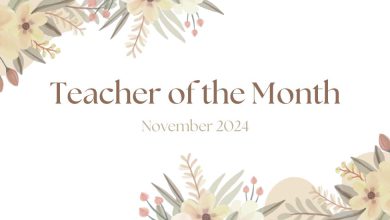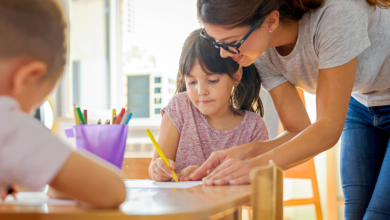Teachers & Parents Teaming Up: Principles of Reggio Emilia

Teachers & Parents Teaming Up: Principles of Reggio Emilia
If there’s an image that describes today’s topic, it’s this one:
Okay, that deserves an explanation.
Up until now, our series explaining the basics of Reggio Emilia have been focused on children. (Which makes sense.) But there are two very important groups of people who have to be involved for the goals of Reggio Emilia to work: teachers and parents.
And the two have to work together as a team. A duo, as it were. Navigating the intricate dance of raising brave, curious, kind kids.
Minus the sequins and the ice skates, the gif makes sense now, right?
Like we’ve said before, one of the great parts about the Reggio Emilia Philosophy is that its methods weave in and around one another. In the first two blog posts of this series, we talked about the capability of kids, the importance of collaboration, expression, and environment. This article covers the role of teachers, keeping record of a child’s progress, and the importance of engaged parents.
Teachers Are Partners in Learning
At Little Sunshine’s Playhouse, teachers guide experiences, discovery, and problem-solving. That’s what keeps a classroom looking like this …
Instead of this …
The fifth tenet of Reggio Emilia says, “Teachers are partners, nurturers, and guides who help facilitate the exploration of children’s interests.” Teachers who follow this philosophy listen and observe the children in their care, all while questioning and looking for opportunities to encourage the exploration of each child’s interests. Like we mentioned in earlier posts, the focus of the teacher isn’t to follow a strict set of curriculum. Instead, they’re looking for ways to engage kids and foster a love of learning using topics they are already interested in.
Are the kids really into superheroes? Maybe the teacher will use superpowers to explore real-life science topics like flight or energy. Or maybe they’ll all create a story based on the heroics of a superhero the classroom creates. And any topic can be turned into a math problem or two 🙂
Reggio teachers are also encouraged to reflect on what they have learned about themselves and their teaching as they help their students do the same thing.
Documentation Is Critical
“Documentation” is a very boring word, but please don’t skip this section!
It may come as a surprise, but one of the most important things a teacher can do to help a child grow and learn is document their progress. In fact, the Reggio Emilia Philosophy thinks that this is so important that it’s a foundational part of the process.
Think of documentation like this … has your phone ever sent you a photo from your gallery along with a message that says, “Look at what you did three years ago!” When you look at it, does it spark memories (good or bad) that may have become fuzzy or that you’d forgotten altogether?
Documenting the learning process is similar. Teachers work to transcribe each child’s classroom experiences using photos, videos, and a portfolio of artwork. It helps teachers and parents learn more about what is and isn’t working for their child, what takes place during the learning process, and records and reminds everyone how much a child knows and can do.
It creates a shared common legacy for everyone involved, which is a really special thing to have.
Parents Are Partners in Education
The last principle of Reggio Emilia focuses on the caregiver. We don’t see them as the people who simply drop off and pick up the kids each day. They are vital to a child’s education and development.
Learning doesn’t stop at the end of school each day. When kids go home, their brains keep running! We invite parents to play an active role in their child’s learning experiences. And, like we’ve said in earlier blog posts, this doesn’t mean a regimented curriculum. Lean into your child’s interests, use the information your child’s teacher is documenting for you, and find ways to make learning fun outside of school.
We’re in this together … like two ice dancers skating for gold. (We’re committed to the analogy.)
We hope this series has helped explain what the basics of the Reggio Emilia Philosophy are. We’re passionate about the results we’ve seen it create in the lives of the children who come to Little Sunshine’s Playhouse, and we hope these primers have helped make the philosophy more approachable and easier to understand.
Happy learning/teaching/parenting/skating! (Okay, we’ll stop now.)
This post is the last in a series that takes a deeper dive into the Reggio Emilia approach. If Reggio Emilia is new to you, don’t worry! We already have some great resources that you can use.
Reggio Emilia Philosophy: This one-stop-shop gives you the information you need if you are brand new to Reggio Emilia. The videos are particularly good, if we do say so ourselves.
What is the Reggio Emilia Philosophy?: A quick blog post that summarizes key parts and concepts of Reggio Emilia.
Children Are Capable: The first blog post explaining the ins and outs of the Reggio Emilia philosophy.
Expression & Environment: The second blog post explaining the ins and outs of the Reggio Emilia philosophy.





